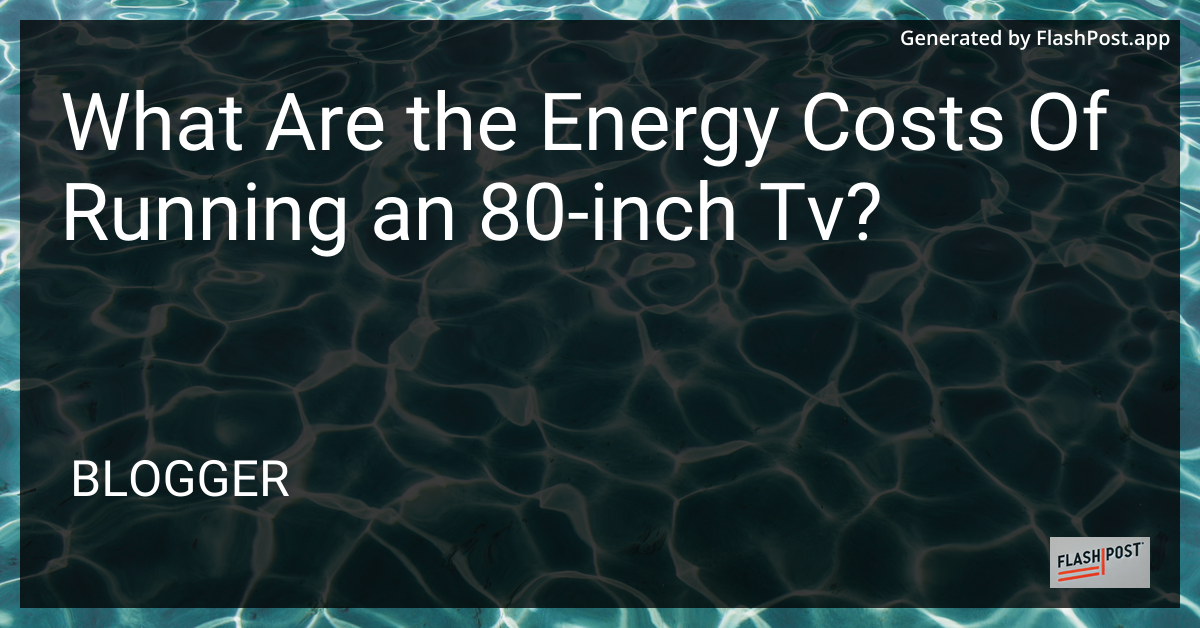What Are the Energy Costs Of Running an 80-inch Tv?

What Are the Energy Costs of Running an 80-Inch TV?
In the modern age of rapid technological advancements, owning a big-screen TV is becoming more common. Specifically, the allure of an 80-inch TV brings us closer than ever to a true cinematic experience at home. But, what are the energy costs of running such a massive display?
Understanding Energy Consumption
The energy consumption of an 80-inch TV depends on various factors such as the type of display technology (LED, OLED, QLED), the resolution (1080p, 4K, 8K), and the settings used for brightness and contrast.
Key Factors Influencing Energy Costs
Display Technology:
- OLED TVs consume more power than LED TVs, but provide superior picture quality due to their ability to control individual pixels. Check out this guide on wall-mounting OLED TVs in 2025.
Resolution:
- Higher resolutions like 4K and 8K tend to use more power. However, they deliver sharper and more detailed images that enhance your viewing pleasure.
Settings Adjustments:
- Reducing brightness and using energy-saving modes can significantly lower power consumption and extend the television’s lifespan.
Calculating Energy Costs
To calculate the energy costs of running an 80-inch TV, you need to know its power consumption in watts, which is typically listed on the product’s specification sheet, and the cost of electricity per kilowatt-hour (kWh) in your area. Here’s a basic formula:
[ \text{Cost Per Hour} = \left(\frac{\text{Power Consumption in Watts}}{1000}\right) \times \text{Price per kWh} ]
For example, if your 80-inch TV consumes 200 watts and your electricity rate is $0.12 per kWh, the cost per hour to run your TV is:
[ \left(\frac{200}{1000}\right) \times 0.12 = 0.024 \text{ USD per hour} ]
If you watch your TV for five hours a day, the daily cost would be $0.12, thus nearly $3.60 a month.
Choosing Energy-Efficient Options
Consumers interested in energy-efficient options should consider TVs with Energy Star ratings. These models consume less power, saving money while also benefiting the environment.
Explore the latest technological strides with various options, such as VTV therapeutics for energy-efficient innovations or find the best 85-inch TV sales for alternatives.
Conclusion
Understanding the energy costs associated with running an 80-inch TV involves considering various factors such as technology, resolution, and usage habits. By making informed decisions, you can enjoy your home cinema experience while keeping your energy bills in check. Stay green and enjoy the big screen! “`
This SEO-optimized article focuses on energy costs related to running an 80-inch TV, and includes internal and external links to engage readers while also being informative.
Comments
Post a Comment